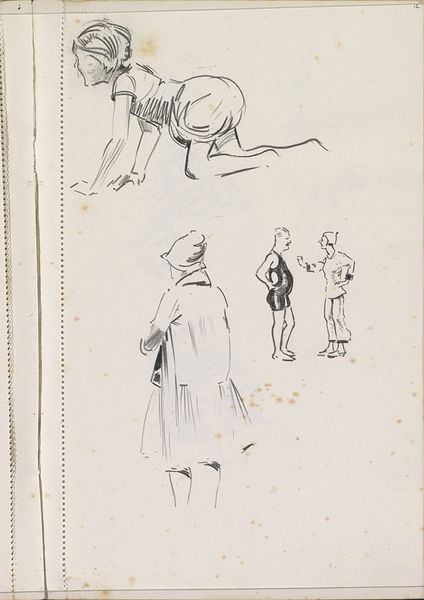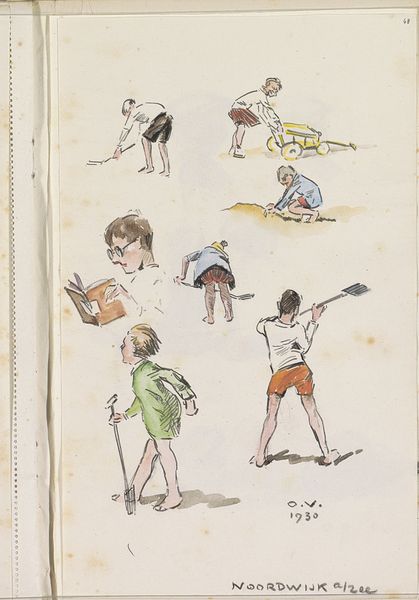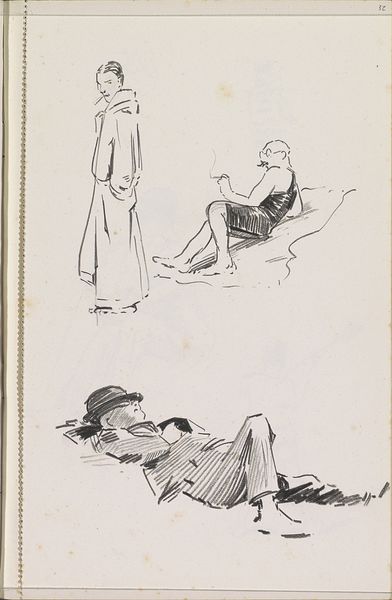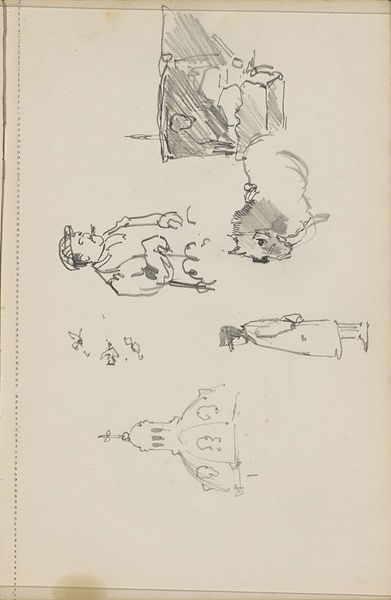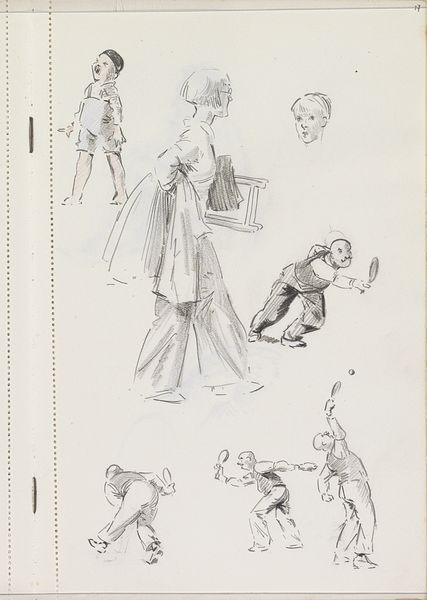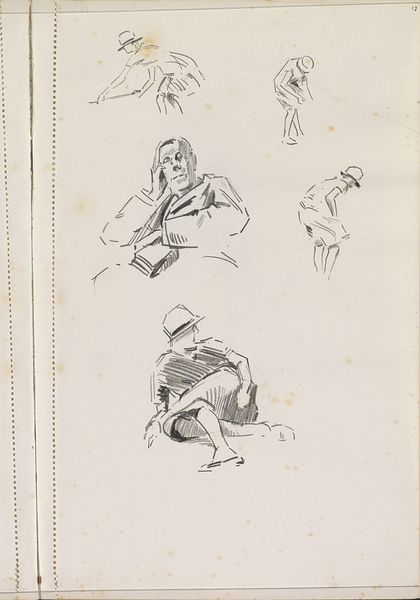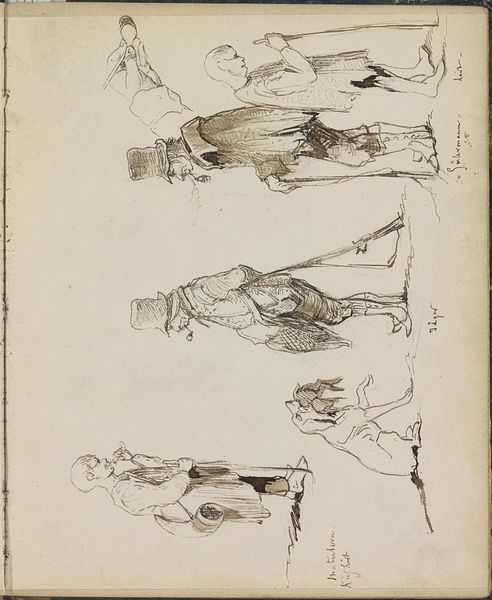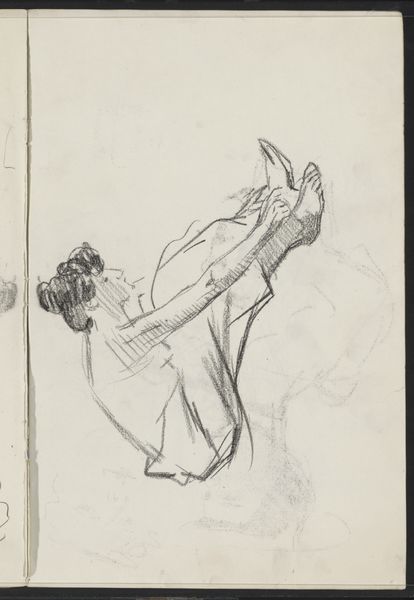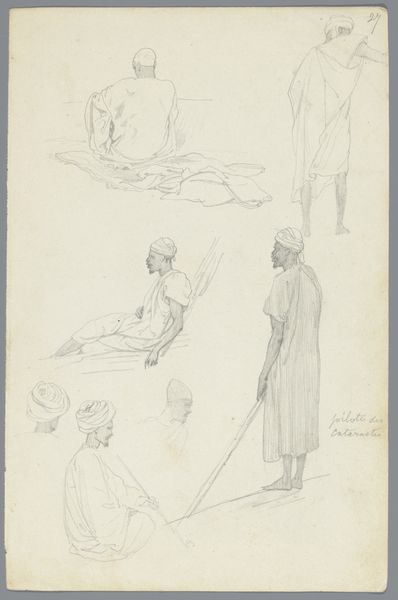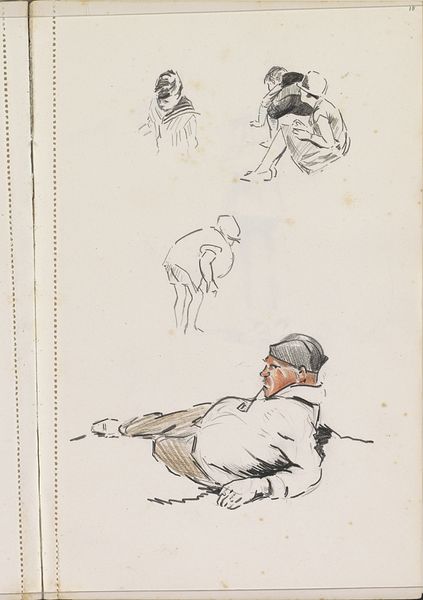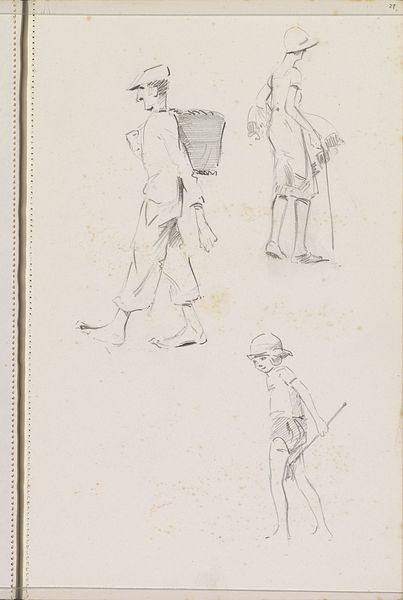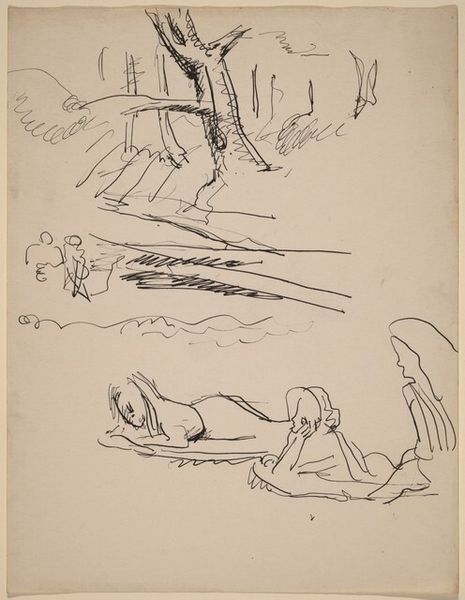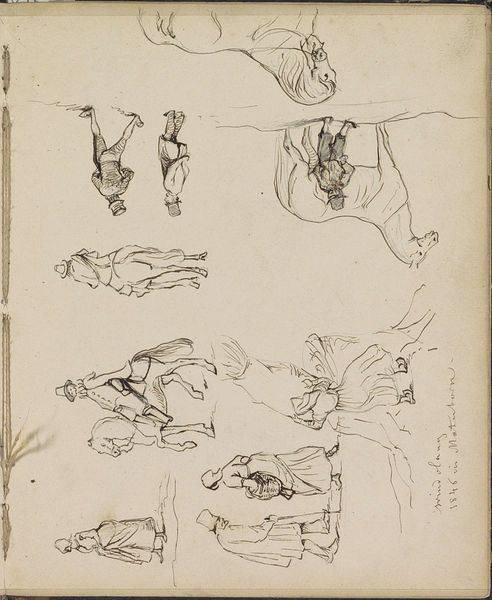
Copyright: Rijks Museum: Open Domain
Editor: Here we have Otto Verhagen’s "Strandgangers", made sometime between 1928 and 1930, with ink and pencil on paper. It’s a really charming sketchbook page filled with beachgoers. It feels light-hearted, but the figure in the center with the umbrella has a distinct gravity, a sort of burdened presence. What do you make of it? Curator: I’m struck by the layering of symbolic baggage here. A beach, nominally a space for leisure, is populated by figures whose poses suggest exhaustion or collapse. Even the figure with the umbrella appears burdened, not protected. It speaks to a cultural memory, perhaps, of the interwar period: a yearning for escape undermined by underlying anxieties. Does the umbrella figure remind you of anyone? Editor: Well, I see a shepherd, almost Christ-like with that bundled-up… is that a blanket or a body? The limp figures on the ground definitely contribute to that sense of symbolic weight. Curator: Exactly! The shepherd is an archetypal image promising salvation and guidance. But Verhagen inverts this. The shepherd figure, with bare feet, struggles; he isn’t offering respite but seems weighed down by the task. Perhaps reflecting societal disillusionment. It recalls other post-war art grappling with lost innocence, shattered ideals. What about the beach setting itself? Editor: I guess it is about how fleeting or even deceptive happiness is. We are seeking enjoyment or escape, but there is a price to pay for those moments of bliss... Curator: Precisely. And consider the cyclical nature of that imagery. It reflects a collective psyche grappling with themes of recovery, resilience, and the persistent shadow of the past even in the pursuit of pleasure. It really makes you think about our own time, doesn't it? Editor: Definitely. I never would have thought this little beach scene had such depth! Thanks for opening my eyes.
Comments
No comments
Be the first to comment and join the conversation on the ultimate creative platform.
